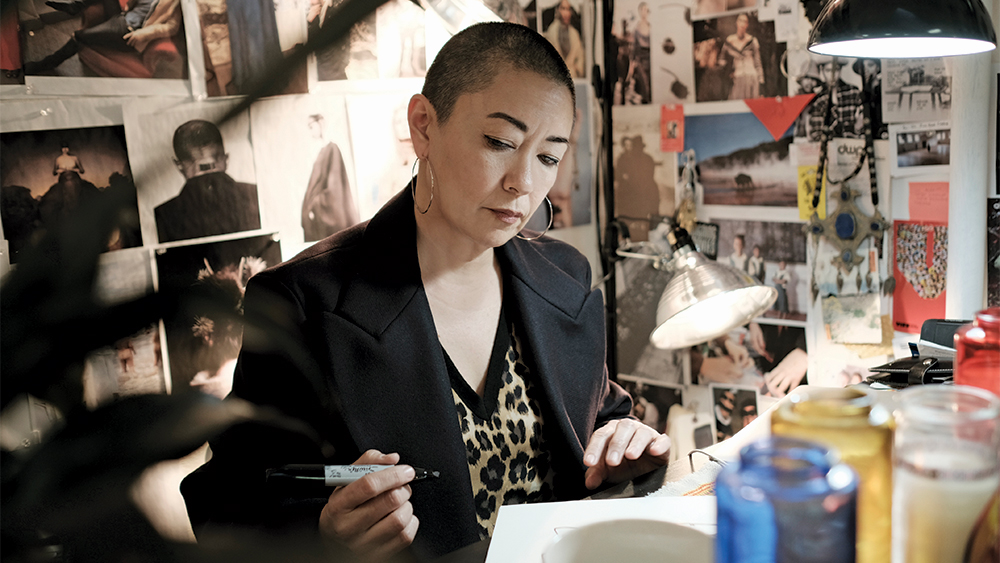TV Crews Still Struggle With Inclusion Despite Some Progress
By Carita Rizzo
LOS ANGELES (Variety.com) – When the Emmy nominations were announced on July 12, they once again cast a spotlight on the lack of diversity in the industry, not just in front of the camera but also below the line. But it should also be noted that the Emmy statistics are a symptom, not a cause, of the industry’s gender and ethnic imbalances.
“The Emmys, the Oscars and other selections are evidence of the opportunities that have been presented to people,” says cinematographer John Simmons, who is the co-chair of the American Society of Cinematographers’ Vision Committee and a governor of the TV Academy. “Our peer group gets together and we judge the films and TV shows that are made. The discriminatory practices of the industry become the foundation of the things we get to view.”
The statistics of the Creative Arts categories are certainly not encouraging if you’re a woman or a person of color. In the visual effects category alone, only 16.3% are women and 19.8% people of color. “The ratio feels accurate,” says managing producer Lindsay Seguin, one of this year’s nominees for NBC’s “Mr. Robot,” who along with her colleague Lauren Montuori makes up two of the eight women nominated for visual effects in her category, alongside 36 men. For Seguin that’s just par for the course. “When I’m in the room for a big important meeting, I’m usually one of the only women,” she says.
In cinematography, where the statistics are even more unbalanced, the Vision Committee was created to address the professional challenges of underserved minorities. “One of our goals is to change the optics of the industry and create environments that make it not unusual, but the norm, for a camera person to be a woman or a cinematographer to be black,” says Simmons, who is African-American and served as DP on ABC’s “Roseanne” reboot before it was canceled. “It’s about making crews look like the society we live in.”
Simmons says change begins with the studios, and department heads in particular. Part of the solution, he believes, is introducing mandates that demand the hiring of a more diverse crew. “That doesn’t always become the most embracing environment for someone to be moved into, and I’ve heard stories that attest to that,” he admits. “But the mandates are actually giving me optimism, because once somebody becomes a contributing member of that environment then, of course, their talents become appreciated. And while it means that someone may have to be sacrificed, you’re not throwing them out on the street, you’re throwing them back into a work force that’s willing to accept them readily.”
Beyond mandates, there are measures that each individual can take to improve the odds for those who are underserved. Selina McArthur, nominated for editing the “USS Callister” episode of Netflix’s “Black Mirror,” has noticed the disparity between how many female editing assistants become editors, compared to their male counterparts. She believes all editors, herself included, could do a better job supporting their assistants and helping them move up professionally. “We need to encourage creativity,” she says. “Often their job becomes so technical, and they work so hard, that you’ve got to remember that they’re there to actually become editors, and you need to encourage them to edit.”
| Costume designer Ane Crabtree was nominated in the sci-fi/fantasy category for her work on Hulu’s “The Handmaid’s Tale.” Courtesy of Hulu |
Montuori, who started her career in animation, feels fortunate to have had female superiors who encouraged her to find her voice. “I was lucky enough to work with some really strong women that didn’t make me feel like I needed to feel self-conscious about speaking up in meetings,” she says. “But there are a lot of female artists that feel very much like it’s a male-dominated environment and that they want to have a voice. It’s hard when the numbers aren’t in your favor.”
Shauna Duggins, the sole female nominee in the stunt category for her work on ’s “GLOW,” got her film career start on the Drew Barrymore-produced “Charlie’s Angels” reboot for ABC. “I didn’t realize how rare it was that there were so many women in one place until you spend more time in the industry,” she says.
With more women in hiring positions, Duggins is also noticing a greater demand for female stunt coordinators. “I’ve been offered several shows lately and I know that other stunt women who are coordinators have as well,” she says. “Typically, they maybe haven’t been thought of before, and it’s often because there are now stronger women in director and producer positions, that eyes are opened to the fact that women do these things too.”
That said, Duggins — like every professional — wants to be respected for her skill, not her gender. “I just want to be known for being a good stunt coordinator, not a female stunt coordinator,” she says. “On ‘GLOW,’ [the producers] respect your opinions and they give you the power. Those are beautiful circumstances to be able to create under, because you don’t feel like you’re walking on eggshells. And that goes for the men and the women on our show.”
Still, there remains plenty of work to be done. “In my most optimistic observation I would like to be able to say that I’m sensing more change than there has been,” says Simmons. “But it hasn’t become the norm by any stretch of the imagination.”


